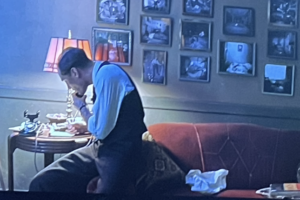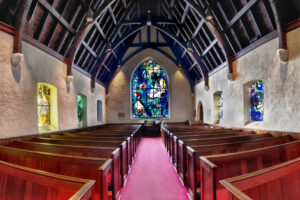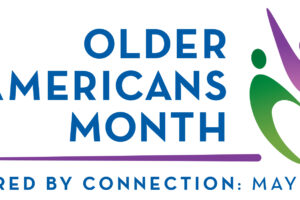There is a bronze plaque on the lower right hand corner of a mural at Washington Irving Intermediate School that states:
Washington Irving High School
By the Board of Education
J. Le Roy Thompson
Superintendent of Schools
Federal Art Project
Westchester County
Sponsored By
Works Project Administration
Painter-Kenneth Bradley Loomis
March 1937
In 1957, Tarrytown and North Tarrytown consolidated their school districts.
 As a result, Washington Irving High School became the junior high school, and Sleepy Hollow became the high school for the district. I was entering seventh grade, and Washington Irving was my new school. After attending F. R. Pierson School (now Landmark Condominiums), which had been built as the original Washington Irving High School in 1898, I thought that WI was the most beautiful school in Tarrytown. My new junior high had its own track and football field with a wonderful stadium. The view of the Hudson River from the second floor of the school was absolutely astounding, and almost in conjunction with the view, was a beautiful mural in the library. This mural extended the entire width of the library and portrayed the Hudson River with a sequential history of Tarrytown and Sleepy Hollow.
As a result, Washington Irving High School became the junior high school, and Sleepy Hollow became the high school for the district. I was entering seventh grade, and Washington Irving was my new school. After attending F. R. Pierson School (now Landmark Condominiums), which had been built as the original Washington Irving High School in 1898, I thought that WI was the most beautiful school in Tarrytown. My new junior high had its own track and football field with a wonderful stadium. The view of the Hudson River from the second floor of the school was absolutely astounding, and almost in conjunction with the view, was a beautiful mural in the library. This mural extended the entire width of the library and portrayed the Hudson River with a sequential history of Tarrytown and Sleepy Hollow.
The mural depicts Native Americans watching intently as Henry Hudson’s ship, the Half Moon, lies at anchor before them. The mural shows an African American sawing wood, probably at Philipse Manor, and a woman feeding geese, with fields of wheat behind her. The mural illustrates the capture of Major John Andre by John Paulding, David Williams, and Isaac Van Wart. It shows Washington Irving sitting under a tree with the shadow of the Headless Horseman in the background. You can also see Sunnyside and Christ Church. The mural illustrates a Civil War soldier bearing the American flag as he leaves his family and Robert Fulton’s first steamship, the Claremont, steaming up the river. Further along in the mural you can see the old Tarrytown-Nyack ferry. You can also see the Manor House at Phillipsburg and of course, the Old Dutch Church of Sleepy Hollow. At the very end of the mural is a mysterious man opening a door for a young school boy possibly leading to education and the future. This outstanding mural was the creation of Kenneth Bradley Loomis for the Works Project Administration in 1937.
During the Great Depression, George Biddle, an artist and classmate of Franklin Delano Roosevelt at Groton Preparatory School, sent a letter to President Roosevelt. Biddle wrote about unemployed artists who had the willingness to "express their ideals in a permanent art form if they were given the government’s cooperation. I am convinced that our mural art, with a little impetus, can soon result, for the first time in our history, in a vital national expression." Biddle was correct, and his request became one of the most influential government programs of President Roosevelt’s New Deal. The quality of art was discussed by the administration of the Public Works Art Project. It was decided that the murals, painted on plaster walls, sometimes on canvas, in schools and public buildings, should reflect American values and local history and give hope to the American people who were suffering the effects of the Depression. The country was divided into forty two districts and local authorities would request funding from the federal government for mural paintings in their court houses, post offices, schools and other buildings. By the end of the program in July 1943, 2,566 murals were painted around the country with the average cost of $1,336 per project. Twenty murals were painted in Westchester County alone, and nine depicted local history such as the one at Washington Irving Intermediate School.
Kenneth Bradley Loomis, the painter of our historically important mural, was born in Steubenville, Ohio in 1906. He studied at the Art Institute of Chicago, The National Academy of Arts in New York, and the Beaux Arts Institute of Design. He was a member, along with other New Deal artists who painted murals in Westchester, of the Society of Independent Artists. In 1933, Loomis won a medal from the Beaux Arts Institute with a scale model presentation of his mural that was to be painted at Washington Irving School.
While some do not consider these murals to be great art, one has to remember that the subject matter was restricted by the New Deal committees to be appropriate and representative of the "American Scene," to tell the history of a community, and to inspire the public. I know that the Washington Irving Library mural inspired me, as well as many other generations of students.
Mrs. Margaret Benedict, an historian and former WI student, and the author of "WPA murals in Westchester County" has stated that, "Many communities, including Rye, Port Chester and Croton, have pulled together resources and used public funding to restore and preserve the murals that tell the story of their founding fathers." At this time, only half of the mural can be seen at one time because a wall has been added half way through the library so that another classroom could be created. I have recently spoken to Howard Smith, Superintendent of Schools, and Mr. Bruce Diggle, school carpenter. Mr. Diggle assured me that great care had been taken to install the partition without touching or damaging the mural in any way. Dr. Smith informed me that plans have been made to remove the partition, and to restore the library back to its original size. This being the case, future students and teachers will be able to enjoy the mural in its entirety.
Richard Miller is the Tarrytown Village Historian; former faculty member of Washington Irving Middle School and former Washington Irving School student.






